There are a handful of religious sites around the world that every traveler should see, regardless of their beliefs or background. Vatican City is one of those. While you walk on the holy cobblestones, however, you’re far more likely to hear echoes of vendors barking “tickets” and “skip the line” than you are to hear angels singing soothing melodies. But if you know where to look, the Roman area around the Vatican offers secluded beauty, incredible food, and locations where you can take some of your best photos, even in the midst of all the bustle. Once you’ve enjoyed the art and history of the Vatican museums, take a moment to wander, eat, and relax in one of the most romantic parts of Rome: the Borgo Pio neighborhood, just adjacent to the Vatican border. Leaving behind Michelangelo’s “The Last Judgment” can be hard, but so is finding a quiet place to eat near the Vatican that isn’t a tourist trap.

The Best Places Near Vatican City to Eat, Drink, and Recharge
Stop for classic quick-service Roman cuisine and espresso.
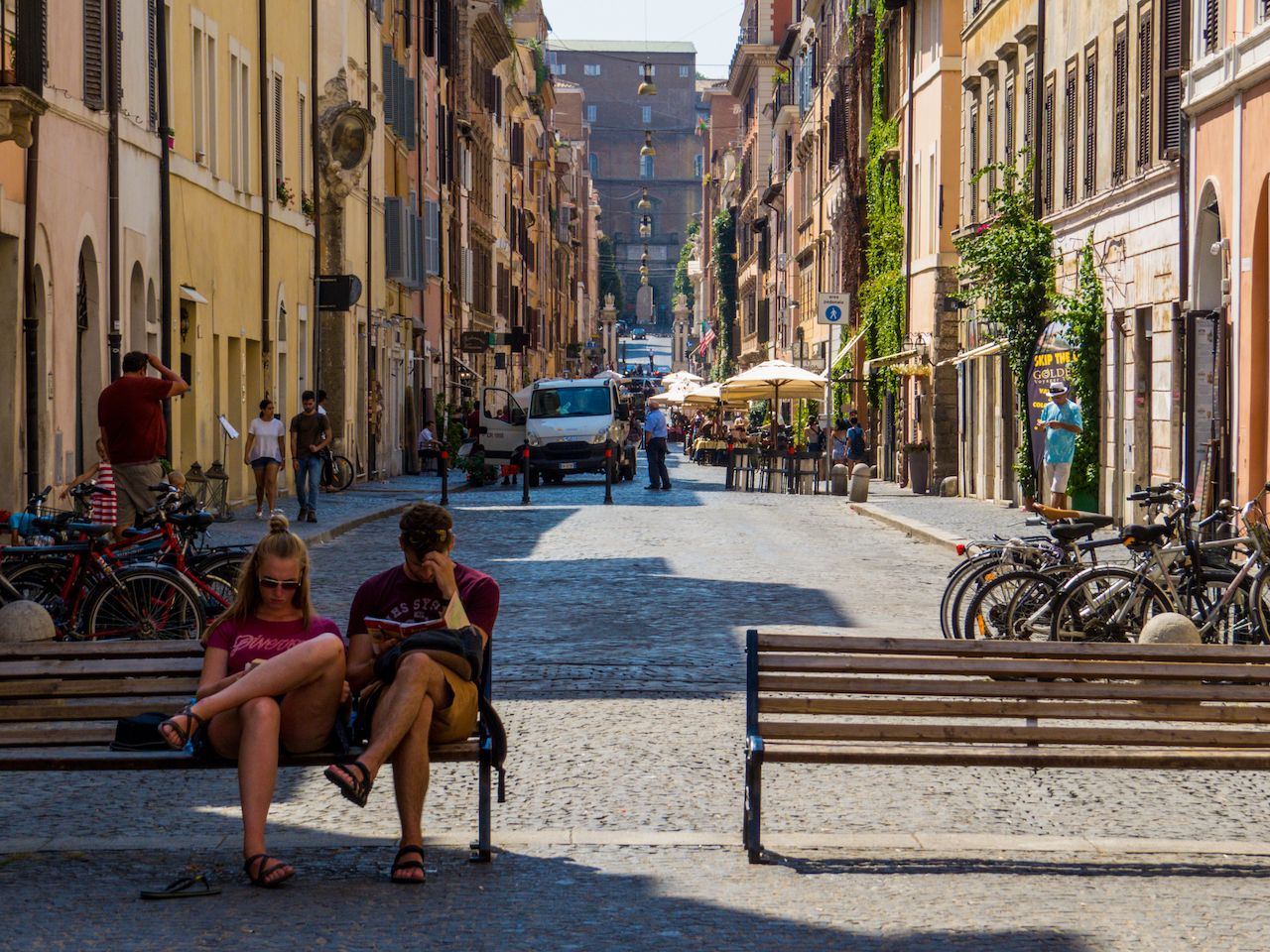
Photo: Diego Fiore/Shutterstock
This “rione” — a word dating back to Augustus’ era, used for territorial subdivisions in Rome’s historic center — is loaded with restaurants, small food shops, and cafes. It’s not only a nice treat for your taste buds; this concentration of old yellowish buildings dotted with brown shutters and covered in greenery is a joy for the eyes and for those who love saturated pictures — no need to edit, after all.
The Borgo Pio neighborhood evolves each year with new restaurants and street food vendors cycling in to replace others that have moved up or moved on. Many are quick and designed for both travelers and locals on the go. With prices ranging from 5 to 8 euros, EGG, a small pasta all’uovo (egg pasta) shop located at Vicolo del Farinone 25, has everything you’d expect from an Italian takeaway spot: cheap dishes, to-go boxes, and a team that works impressively fast to serve everyone in a timely manner. Choose your freshly made pasta from the counter and pair it with one of the sauces listed on the chalkboard. You can sit inside, but everything here is better enjoyed outside with large Americano.
Italians drink espresso right after lunch, and this is mandatory after one or two plates of EGG’s pasta. To embrace this ritual, proceed about 500 feet to the old and semi-decadent Bar Latteria Giuliani, simply referred to as Latteria by residents. Don’t expect fancy single-origin coffee brands, hipster light bulbs, and acoustic music. This place is a quintessential Italian bar; croissants with chocolate and jam fillings are displayed together with classic paninis and sandwiches, and a small stand on the counter presents an exquisite variety of candies, all while soft radio music plays in the background. The etiquette of ordering a coffee in Italy is a process in itself — for now, just remember to say “Un caffè, per favore.” You don’t need to add “espresso” because it’s implied. Enjoy your coffee while standing at the counter or take a seat.
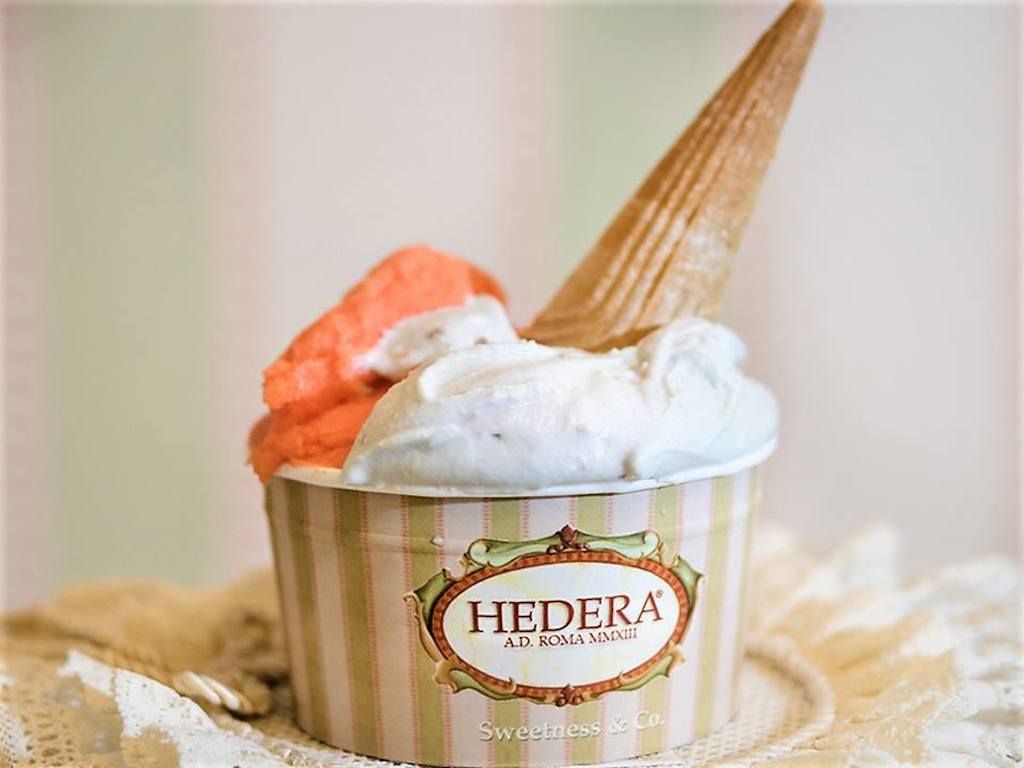
Photo: Hedera/Facebook
A dry and caffeinated tongue needs refreshment, and that’s where the gelato shop Hedera comes in. Hidden behind a blanket of ivy, this elegant ice cream boutique serves artisanal flavors made from high-quality ingredients (the percentage of fruit in its flavors is 51 percent minimum) that change based on the season. If gelato has been the foundation of your diet for the past few days, you can always indulge in a cannolo, the classic Sicilian delicacy. Hedera’s take is made with ricotta gelato, extra dark chocolate, candied cherries, and Bronte pistachios.
Opt for a more formal meal.
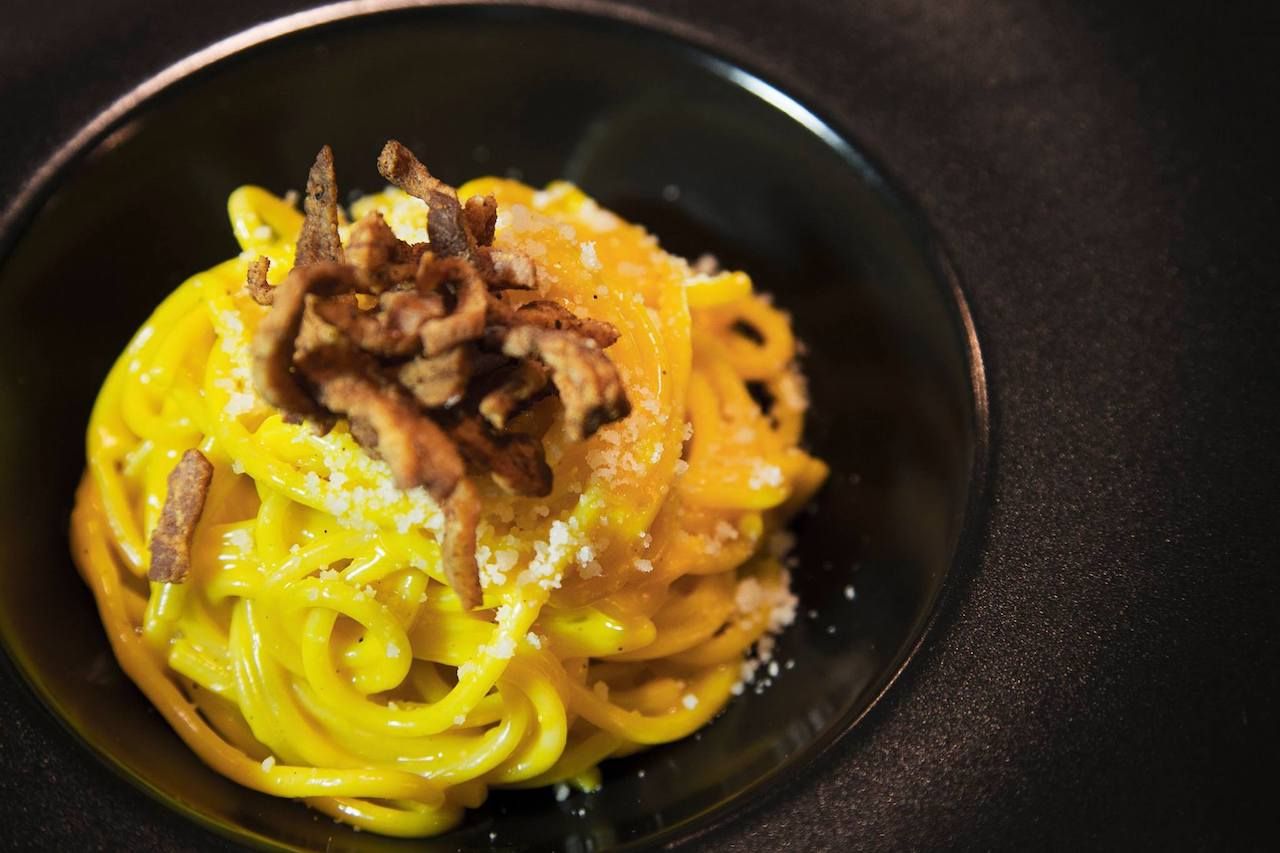
Photo: Osteria Nuvolari/Facebook
Borgo Pio is lined with staples serving classic Roman cuisine including places just around the corner from the Vatican tour office.
- Da Romolo’s menu of pizzas and piatti make it the place to impress. It has been in the neighborhood since 1927 and pairs wines with its dishes so well that you’re sure to feel like a connoisseur by the time you pay the bill.
- Borghiciana Pastificio Artigianale has a dozen tables and they fill up very quickly. The reason is simple: The pasta here is made fresh and the quality is extraordinary, the carbonara in particular. The doors open at 12:00 PM, so be sure to come on time. Otherwise, the wait is usually around 15 minutes.
- Arlù doesn’t look like the traditional osteria Romana (Roman restaurant) and the result is a warm and intimate restaurant that we’d suggest for a dinner date. Far from a tourist trap, Arlù is a tiny gem that shines through beautifully presented dishes and attention to detail.
- Ostaria Novolari is a classy and modern osteria on a parallel street of Borgo Pio. Starters are delicious — try the pumpkin flowers with ricotta cheese and lard, and the artichoke — as are the mains. Combine your meal with one of the many bottles available on the wine list.
- Il Mozzicone sits in front of the ivy wall and the old fountain, and it’s the perfect place to enjoy pasta or pizza alfresco.
Borgio Pio beyond the food
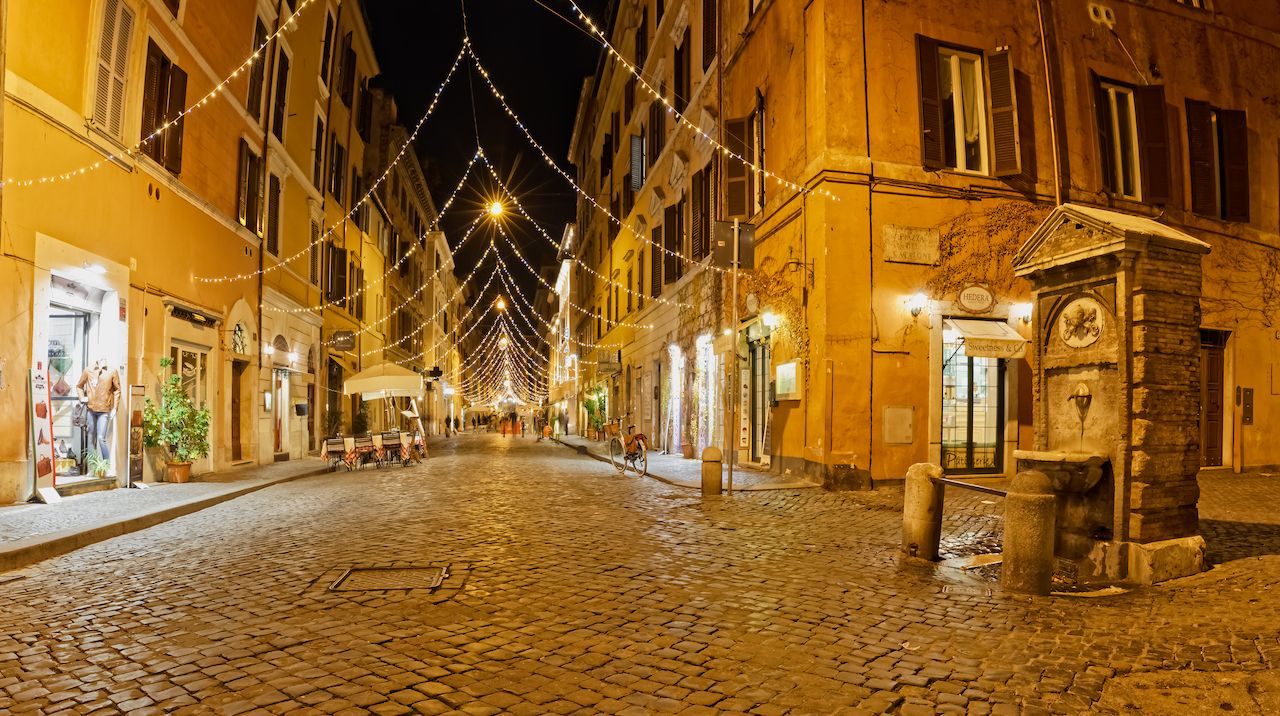
Photo: BOPIS Zagreb/Shutterstock
The building where Hedera is located is among the most photographed ones around the neighborhood. American ivy grows on it 10 months a year, adding to its Romanesque ambiance and making it particularly photogenic and unique. If you can, come in the fall when the leaves are every shade of orange. However, if you happen to be here in the spring or summer, when the ivy is green and fully grown, don’t expect it to be any less spectacular. The space in front of the building is actually considered a square, called Piazza del Catalone. Here, refreshing and drinkable water flows non-stop from a tiny fountain that dates back to the 1800s. Refill your bottle or take a sip of the so-called Acqua Marcia.
Even a simple photo of the whole of Borgo Pio from the top of the street can be rewarding. Plus, some shop signs here are very old and classic — making it worth capturing them before they’re replaced. Don’t be scared to explore every little alley as you’ll find hidden pots of flowers, small doors, trees, and historic gems like the arch on Vicolo delle Palline. Artisanal shops are scattered here and there throughout Borgo Pio, Borgo Vittorio, and the other streets in the neighborhood where workers produce and repair handmade goods in their quiet workshops. Peek inside or ask if you can enter and take a few photos. You might hear some incredible stories.
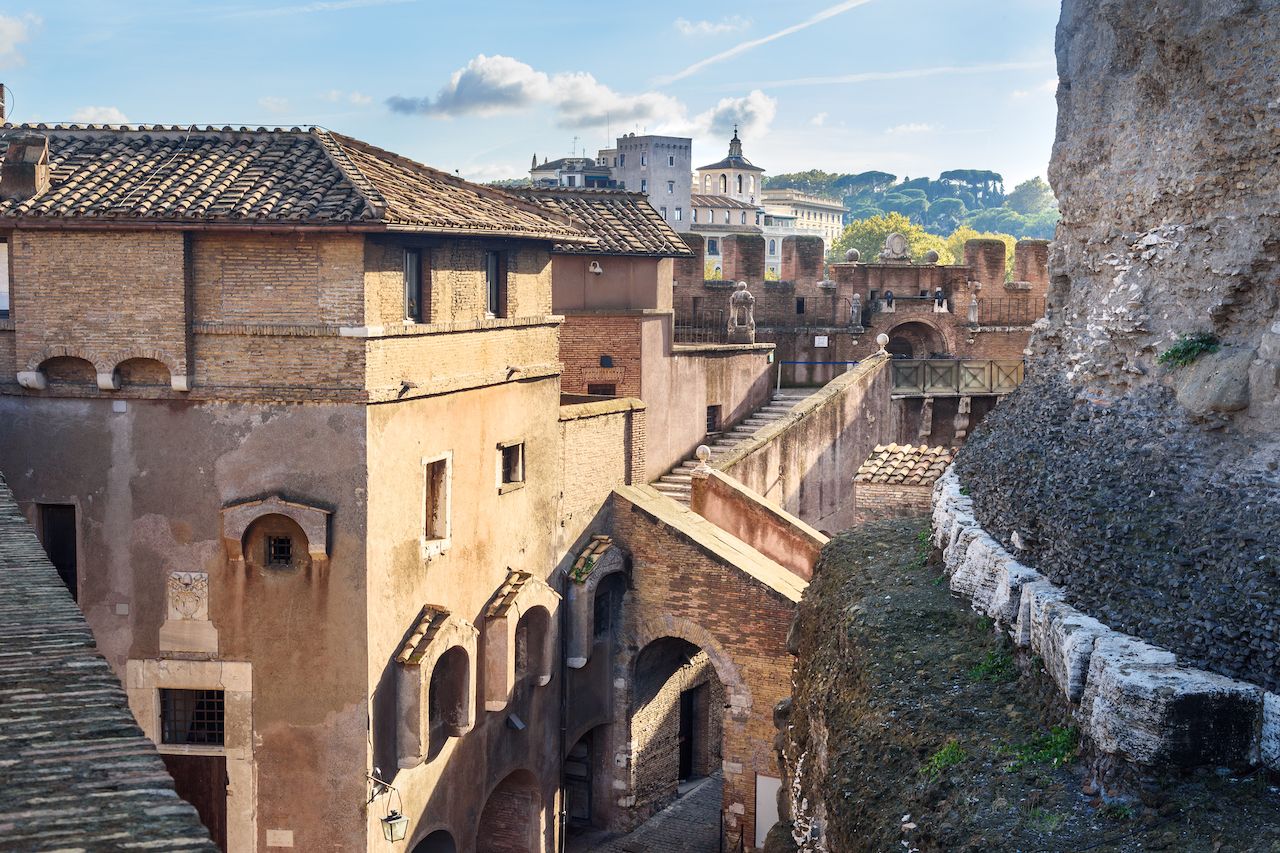
Photo: Elena Odareeva/Shutterstock
Once you’ve finished exploring Borgo Pio and its side alleys, it’s time to see it all from a different perspective. Besides the Vatican, the main attraction of the area is Castel Sant’Angelo. Built between 123 and 139 AD, this castle is a short walk from Borgo Pio. Above the castle, the Terrazzo dell’Angelo offers a breathtaking view of St. Peter’s Square and the Tiber River.
While crowds and pesky ticket vendors are taking a toll on the area around the Vatican, there is still so much to love about these streets. Listen carefully over your bowl of freshly made pasta or gelato — you might just hear those angels singing.